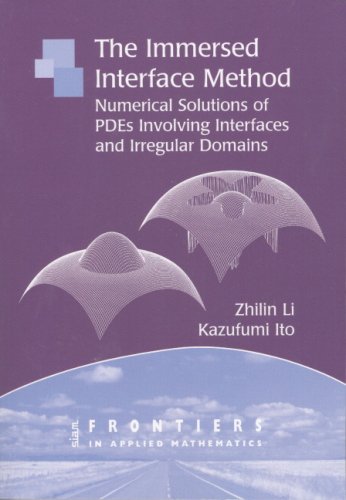

Most ebook files are in PDF format, so you can easily read them using various software such as Foxit Reader or directly on the Google Chrome browser.
Some ebook files are released by publishers in other formats such as .awz, .mobi, .epub, .fb2, etc. You may need to install specific software to read these formats on mobile/PC, such as Calibre.
Please read the tutorial at this link: https://ebookbell.com/faq
We offer FREE conversion to the popular formats you request; however, this may take some time. Therefore, right after payment, please email us, and we will try to provide the service as quickly as possible.
For some exceptional file formats or broken links (if any), please refrain from opening any disputes. Instead, email us first, and we will try to assist within a maximum of 6 hours.
EbookBell Team

0.0
0 reviewsThe Immersed Interface Method: Numerical Solutions of PDEs Involving Interfaces and Irregular Domains provides an introduction to the immersed interface method (IIM), a powerful numerical method for solving interface problems and problems defined on irregular domains for which analytic solutions are rarely available. This book gives a complete description of the IIM, discusses recent progress in the area, and describes numerical methods for a number of classic interface problems. It also contains many numerical examples that can be used as benchmark problems for numerical methods designed for interface problems on irregular domains.
The IIM is a sharp interface method that has been coupled with evolution schemes such as the level set and front tracking methods and has been used in both finite difference and finite element formulations to solve several moving interface and free boundary problems. In particular, the authors discuss the IIMs applications to Stefan problems and unstable crystal growth, incompressible Stokes and NavierStokes flows with moving interfaces, an inverse problem identifying unknown shapes in a region, a nonlinear interface problem of magnetorheological fluids containing iron particles, and other problems. The book also contains several applications of free boundary and moving interface problems, including examples from physics, computational fluid mechanics, mathematical biology, material science, and other fields.
The IIM, which is based on uniform or adaptive Cartesian/polar/spherical grids or triangulations, is simple enough to be implemented by researchers and graduate students with a reasonable background in differential equations and numerical analysis yet powerful enough to solve complicated problems with high-order accuracy. Since interfaces or irregular boundaries are one dimension lower than solution domains, the extra costs in dealing with interfaces or irregular boundaries are generally insignificant, and many software packages based on uniform Cartesian/polar/spherical grids, such as the FFT and fast Poisson solvers, can be applied easily with the IIM. The most recent IIM computer codes and packages are available online.
Audience This book will be a useful resource for mathematicians, numerical analysts, engineers, graduate students, and anyone who uses numerical methods to solve computational problems, particularly problems with fixed and moving interfaces, free boundary problems, and problems on irregular domains.